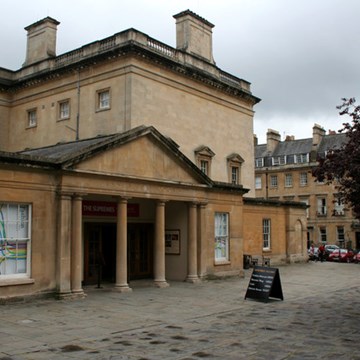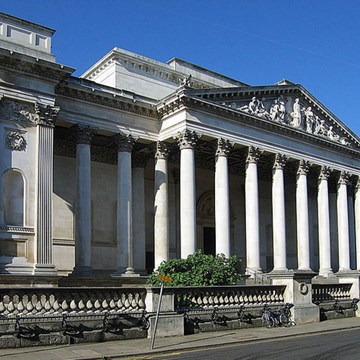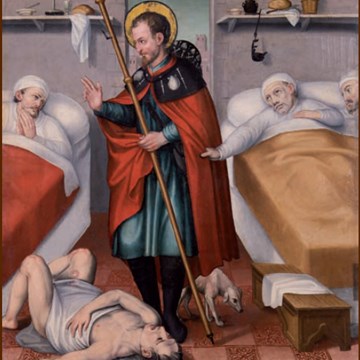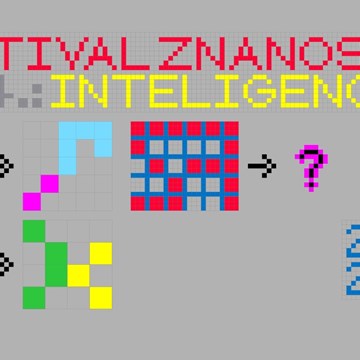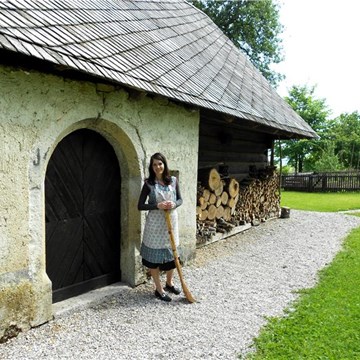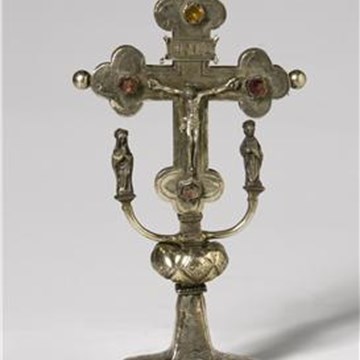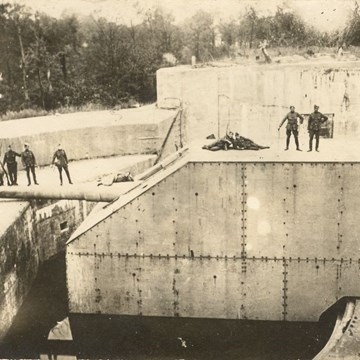FORMA VIVA 2025: GIORGIO ANDREOTTA CALÒ & ALDO CALÒ
FORMA VIVA 2025 –
Giorgio Andreotta Calò & Aldo Calò |
»A CALÒ« |
15 September – 10 October 2025;
Closing: 10 October 2025 at 12 PM.
Worksite is open until 4 October 2025 |
Curator: Mara Ambrožič Verderber,
Co-curator and worksite manager: Ištvan Išt Huzjan,
Master sculptor: Max Seibald,
Production: Piran Coastal Galleries 2025,
Project is supported by: Municipality of Piran and Ministry of Culture of the Republic of Slovenia.
PRESS RELEASE
In the autumn season, the Piran Coastal Galleries of Piran traditionally host the biennial International Sculpture Symposium Forma viva Portorož. In accordance with the PCG’s vision, new stone sculptures have, for several decades, entered public space – urban centers, parks, and green areas of towns on the Adriatic coast of Slovenia. The symposium continues to be a space of artistic excellence, openness, and exploration of the significance of stone as a traditional sculptural material within contemporary visual art.
This year’s symposium will be marked by collaboration with established international and domestic artists, while plans for spatial solutions to place both existing and new sculptures in coastal areas will continue.
The project will be carried out in cooperation with the Italian Community “Giuseppe Tartini” of Piran and the Croatian Cultural Society “Istra” from Piran, with support from Vinakoper and Kogo.
The realization of the project is made possible by the Municipality of Piran and the Ministry of Culture of the Republic of Slovenia.
PROJECT CONTENT
This year’s international symposium in Seča opens the exceptional story of two artists: Aldo Calò (1910–1983), a renowned Italian sculptor who participated in the symposium in 1963, and his grand-nephew Giorgio Andreotta Calò, one of the most important contemporary Italian artists. Though separated by time, they are united by artistic thought and a historical connection.
The artistic project, titled A Calò, establishes a sculptural and personal dialogue with the past. Its gesture is based on the idea of re-materialization – a “copy” of a lost sculpture from the Squarcio (Eng. Crack) series, which Aldo created during the 1963 symposium. The work later remained on private land – formerly a public part of the Forma viva Sculpture Park – due to a property dispute between private owners and the Municipality of Piran. Giorgio now returns to preserved drawings, photographs, and documentation kept in the archives of the public institution Piran Coastal Galleries, proposing a reconstruction of the sculpture to be created in Istrian stone, by hand, with chisel and hammer.
The project raises conceptual questions about the role of the copy in art and its creation as a creative act of maintaining dialogue between generations and shaping an artistic relationship that transcends time. The central motif – the crack (Ital. squarcio) – will be recreated by Giorgio manually and intuitively, as a spatial gesture through which the past, present, and future shine through. The project thus brings together elements of memory, research, and the tradition of stone sculpture.
ART AS A BRIDGE BETWEEN PAST AND PRESENT
The project is not only a sculptural homage to sculpture – it is a personal search for identity, a historical inquiry, a tribute to the Forma viva symposium project itself, and at the same time an open question: what does it mean to sculpt together – even across a time span of several decades?
Giorgio Andreotta Calò was invited to participate by Mara Ambrožič Verderber, director of the Coastal Galleries of Piran, who has collaborated with the artist for decades. While reviewing the state of the PCG’s public collection in December 2020, she learned from curator Dr. Majda Božeglav Japelj that the sculpture was part of the third edition of the symposium in Seča in 1963.
This led to the discovery of rare information preserved both in the PCG’s archives and in Aldo Calò’s private archives in Rome, contributing to a multilayered interpretation of the project, which emerges from the poetic intertwining of the fate of the artwork and the lives of both artists.
A REFLECTION ON PUBLIC GOOD – MEMORY AS A TOOL FOR A BETTER PRESENT
This year’s edition of the symposium does not avoid current issues, such as: the art-historical question of the copy and the original, memory as a socio-political tool for the unconditional protection of the public good, the removal of artworks from public space, misguided interventions in cultural heritage, and the delimitation between public and private interest.
On an institutional level, this project also centers the question of how to protect art in public space and what role Forma viva should play in the 21st century.
The symposium will include a rich accompanying program: workshops for all generations, public debates and meetings with the local community, a round table intended for citizens and the professional public, as well as visits to the work site by nationally and internationally recognized art critics and curators.
The program is being prepared with the desire to once again activate spaces for meeting, understanding, and shared care for the future of art within the Forma viva project.
Professional meetings and public round tables will be led by PCG’s director Mara Ambrožič Verderber and Matic Bukovac, curator with a Master of Science degree at PCG.
Workshops for the youngest will be coordinated by Ana Papež, responsible curator-pedagogue at PCG, and led by Ištvan Huzjan.
Dragan Klarica, cultural worker and external collaborator, will again this year organize free culinary workshops and meetings with residents and local cultural societies, taking place every Saturday at the sculpting site in the company of artists and curators.
More information on the program will be published at the beginning of September 2025.
ADDITIONAL PROJECT IN THE MUNICIPALITY OF PIRAN AS PART OF MUNICIPAL HOLIDAY CELEBRATIONS
Just before the end of the symposium, the concluding event of the project Renovation and Valorization of Venetian Defensive Structures in Piran will take place. Its symbol is stone – as a bearer of memory and a metaphor of openness.
The project also came to life thanks to the Piran Coastal Galleries, which, during preparations for Forma viva, established a link between the Microclima Association and the Municipality of Piran. The municipality then successfully obtained funding for the renovation of the rondella – a defensive tower of the former Piran city walls on Cape Madona–and for other project activities.
More at: https://www.piran.si/objava/1045489.
The project involves artist Giorgio Andreotta Calò (with the Microclima Association), the Municipality of Piran, the Italian Community “Giuseppe Tartini”, and the Self-Governing Community of the Italian Nationality of Piran.
Their cooperation weaves a new bond between both shores of the Adriatic – between past, present, and future.
The rondella on Cape Madona in Piran and the fortress of St. Andrew in Venice, as former stone guardians of the Serenissima – the former Venetian Republic – now become spaces of shared memory, artistic inspiration, and heritage worth preserving.
This is not just a continuation of tradition, but a living connection through time. In this year, in which past, present, and future intertwine, a shared story is once again being shaped in stone between the Slovenian and Italian cultural spaces.
BIOGRAPHIES OF THE AUTHORS
Aldo Calò (born Osvaldo Calò, 1910–1983) was one of the leading Italian sculptors of the 20th century, whose work marks the transition between figural and informal art. After studying at the Art Institute in Lecce, he further developed his skills in the art centers of Lucca and Florence.
His first solo exhibition took place in 1945 in Lecce, marking the beginning of his rise on the Italian and later international art scene. Participation in prestigious exhibitions such as the Venice Biennale (1962) and the Rome Quadriennale, as well as travels through France and the UK – where he was strongly influenced by the work of Henry Moore – significantly shaped his artistic expression.
Calò primarily worked in metal and wood, and his sculptures reflect the freedom and materiality of informal art. In 1975, the city of Rome dedicated a retrospective exhibition to him at Piazza Margana. Today, his works are held in major museums in Italy and abroad, including the Vatican Museums, the Museum of Modern Art in New York (MoMA), and the Centre Pompidou in Paris.
Giorgio Andreotta Calò, born in 1979 in Venice, is a visual artist whose work encompasses sculpture, installations, and performance, often with a strong experiential and site-specific character. After studying at the Venice Academy of Fine Arts and the Kunsthochschule in Berlin, he deepened his artistic research at prestigious international art residencies in the Netherlands (Rijksakademie van Beeldende Kunsten, Amsterdam) and in France (Villa Arson, Nice). His works, which are often monumental, explore the relationship between space, time, and memory and invite the viewer to physical and sensory involvement. In 2011, he was included in the main exhibition of the 54th Venice Biennale ILLUMInazioni/ILLUMInations, and then in 2012, he received the prestigious MAXXI Prize in Rome. In 2014, he received the New York Prize, awarded by the Italian Ministry of Foreign Affairs. In 2017, he represented Italy at the 57th Venice Biennale with the installation Untitled (The End of the World), an architectural intervention that reflects on the instability of our historical present. His retrospective exhibition Città di Milano, presented in 2019 at the Hangar Bicocca Pirelli exhibition space in Milan, cemented his position on the international contemporary art scene. His works are part of numerous public and private collections in Italy and abroad.
ADDITIONAL INFORMATION ABOUT THE AUTHOR
As part of the Thick Atmospheres (Slov. Goste atmosfere) program – a discursive program curated by Bianca Stoppani, editor at Fondazione In Between Art Film, and held on October 17 and 18, 2024, in collaboration with the Palazzo Grassi – Pinault Collection foundation in Venice – a talk titled When Reality Overflows Imagination also took place. It featured the artist Giorgio Andreotta Calò and Mara Ambrožič Verderber, director of the Piran Coastal Galleries. To understand the artistic poetics, the conversation in Italian with English subtitles can be viewed at this link:
https://inbetweenartfilm.com/when-the-real-floods-the-imaginary/
Prepared by: Mara Ambrožič Verderber, in collaboration with Matic Bukovac and Ištvan Išt Huzjan.
Exhibitions and events
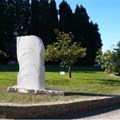
SIMPOZIJ FORMA VIVA PORTOROŽ 2011, Seča pri Portorožu
Permanent exhibitionMednarodni kiparski simpozij Forma viva praznuje letos visok jubilej. Petdeset let. Petdeset let ohranjanja tradicije klasičnega kiparskega pristopa. Petdeset let preverjanja tradicionalnih...

60th INTERNATIONAL PAINTING EX-TEMPORE
Temporary exhibition at Piran Coastal Galleries from 30.08.202530 August‒6 September 2025 Ex-tempore Piran is the Piran Coastal Galleries' event that is most open to the public and visual artists. It is recognizable for its competitive character and enviably...
Activities from this museum

ARTLAB MEDUZA 2025: Pedagogical and Andragogical Workshops
During the Tinka Leskovšek's exhibition Sweet Vitality, a series of Saturday...

BLOOMING TARTINI SQUARE – INSTALLATION
BLOOMING TARTINI SQUARE – INSTALLATION INSTALLATION BLOOMING TARTINI SQUARE...

MY DREAM MEADOW
Alongside the exhibition of theartist Gani Llalloshi Nostalgie, which will be...

PEDAGOGIC AND ANDRAGOGIC PROGRAM ACCOMPANYING THE “MISCELLANEA” EXHIBITION
Along with the exhibition Miscellanea, which in old Latin means a mixture of...


